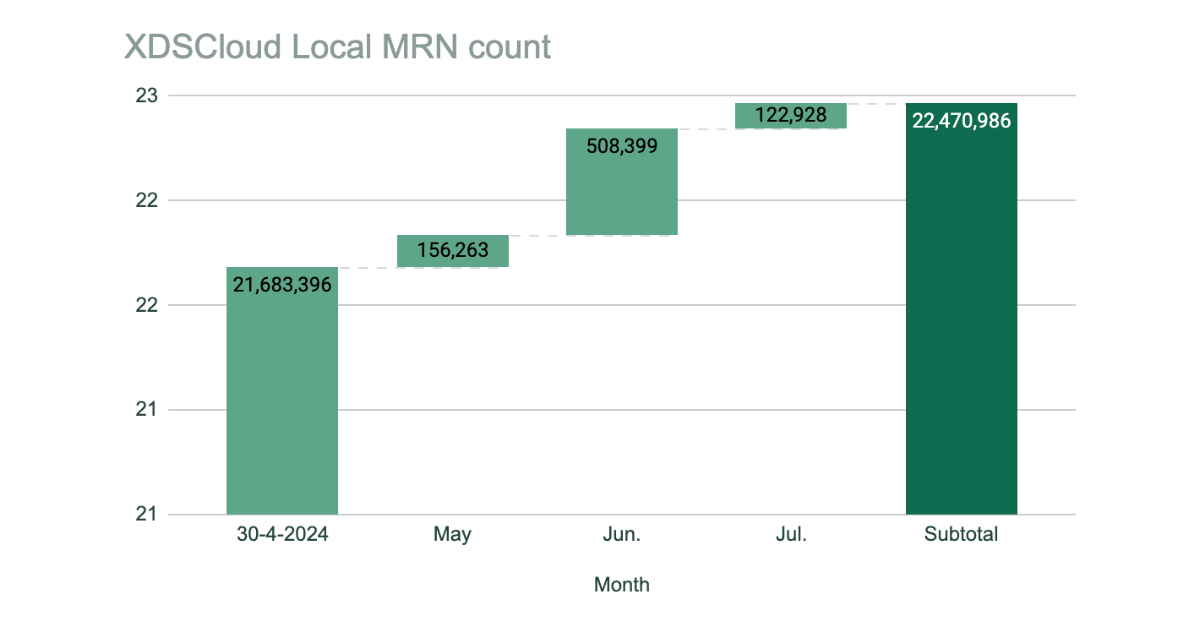XDS Statistics - July 2024
As part of our monthly series, we are sharing 4 Key Performance Indicators (KPIs) to better understand the value that Founda's XDSCloud solution offers. Here are the KPIs for the month of July 2024 for XDSCloud in the Netherlands.
KPI 1 - Registered Document Volume
This KPI gives insights into the total amount of XDS documents that are available within the XDSCloud infrastructure. Since each XDS document represents a certain type of clinical information it is broken down into different document types. Each type refers to a specific (set of) XDS document formatCodes (e.g. DICOM Key Object, Medical Summary, Basic Patient Privacy Consent, etc.).
KPI 2 & 3 - Total number of exchanged DICOM Studies & (XDS) Documents
These KPIs gives insights into the amount of DICOM Studies and Documents that are exchanged across different healthcare institutions that are part of the Dutch XDSCloud infrastructure. It does not include any exchanges within a healthcare enterprise. Only the "provide" volume is counted as an indication of the total volume that healthcare institutions share among each other. Each provided study of document is either received by another XDSCloud node, or is received by a healthcare institution in an external network outside the XDSCloud infrastructure.
The first diagram shows the amount of DICOM studies exchanged over last three months. The second diagram shows a similar picture for the amount of exchanged (XDS) documents. The exchange document volume is approx. 6-7 times higher than the amount of DICOM studies exchanged.
KPI 4 - Number of registered patient identifiers
This KPI gives insights into the total number of unique patients registered at each institution. As the data this KPI is based on is anonymised it is not traceable to individual patient records. Hence, the total number across all institutions cannot be corrected for duplicates. We therefore track both the Dutch unique Patient Identifier (referred to as BSN), and the health institution (local) Patient MRN.
The delta between the two indicates how many patients are registered without a known BSN. In absolute terms the number of local identifiers gives an indication of how many patient records are available and potentially accessible when complying with local data privacy regulations.
Author
Andries Hamster
Andries' expertise lies in the domain of "standards-based interoperability" to realize health information exchanges. Throughout his career he has been exposed to many interoperability standards such as DICOM, HL7 and he has been involved with IHE from the start.





